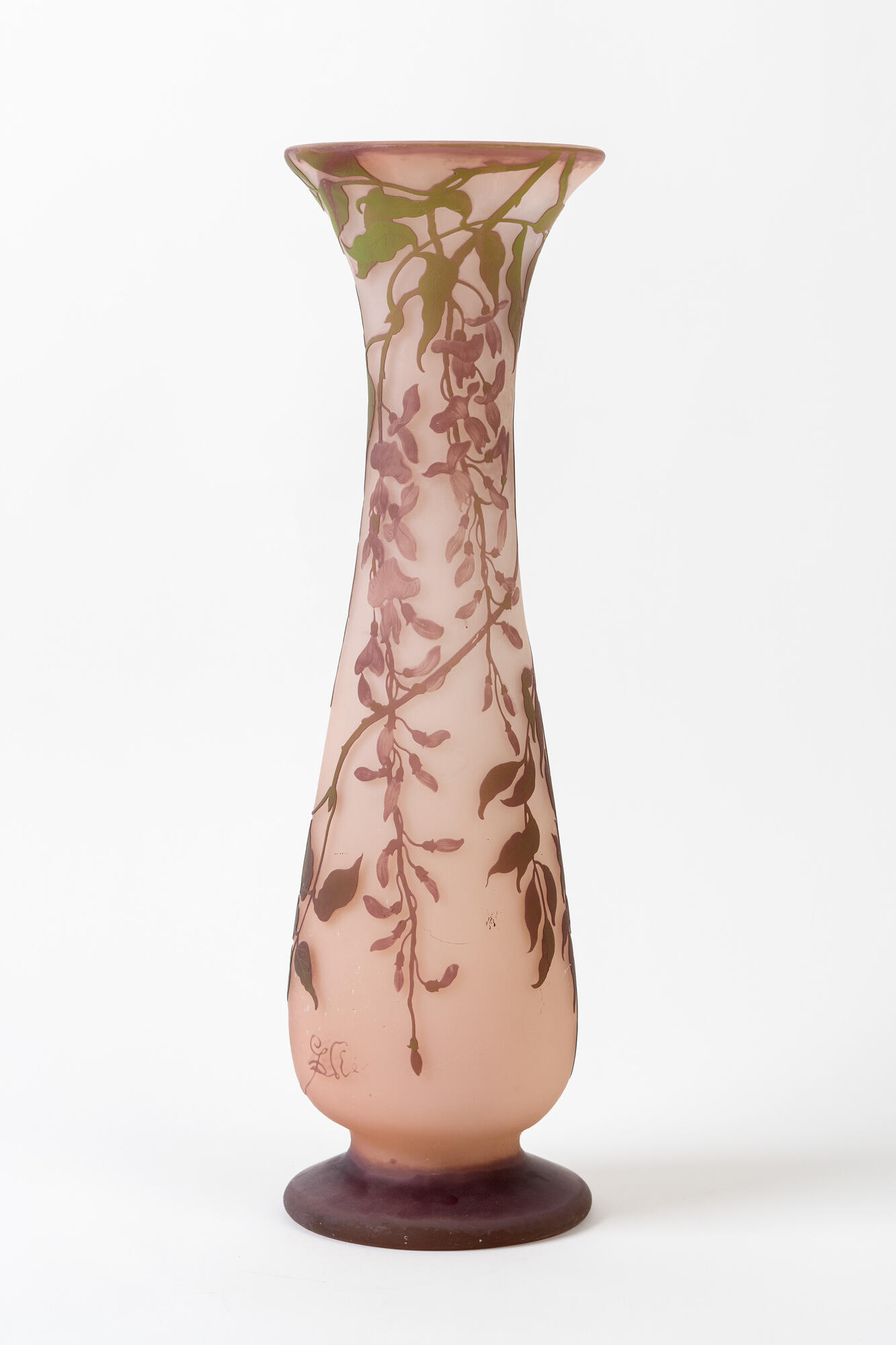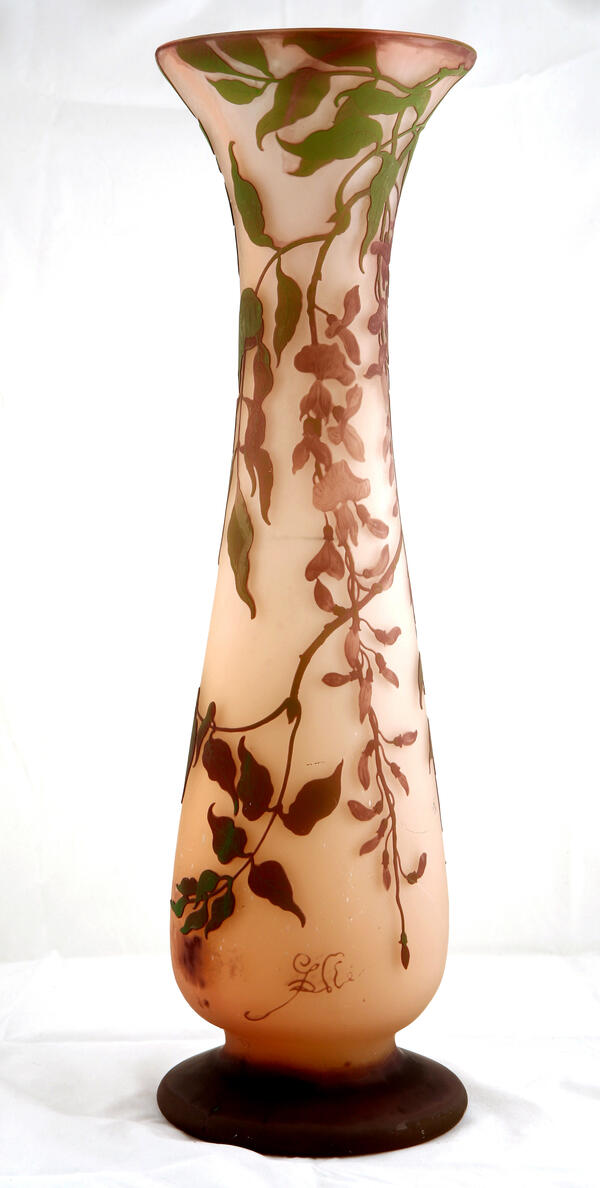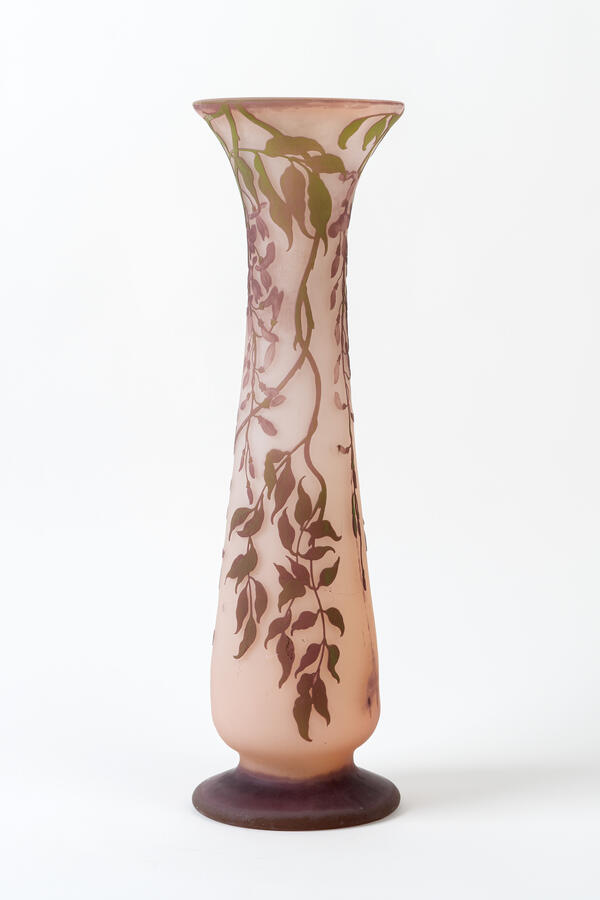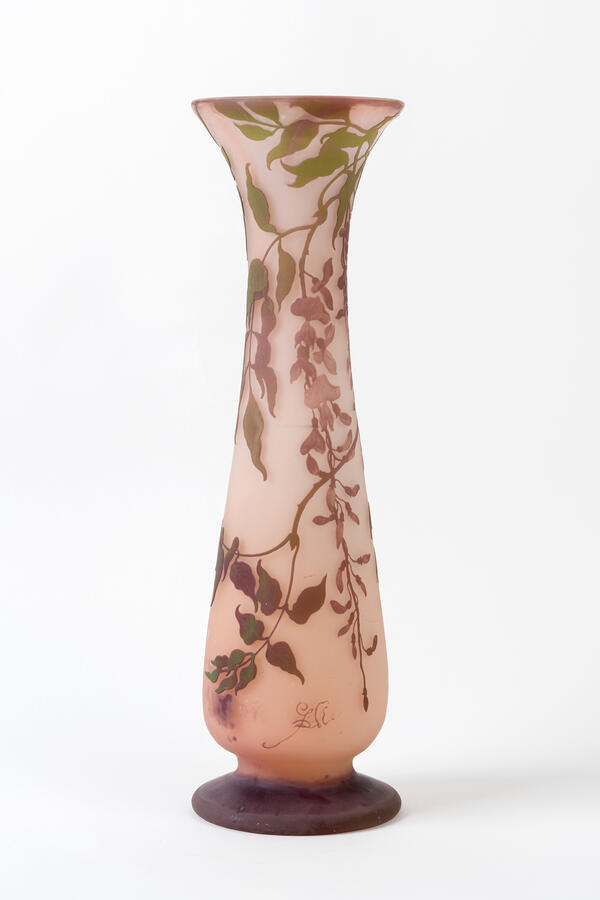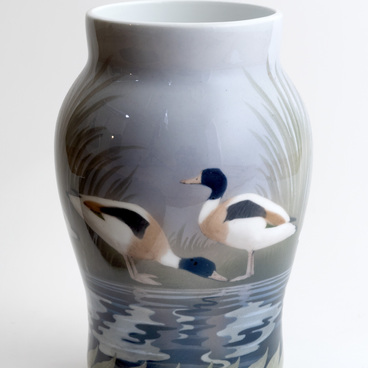A vase depicting wisteria adorns the Maple Drawing Room of the Alexander Palace. The piece was created by the French artist Emile Gallé. The vase is decorated using a common motif of floral decoration — a descending branch of wisteria, which emphasizes the elegant shape of the vase. The decor of wisteria was designed by Gallé around 1904 specifically for the items produced on industrial scale. In most cases, such a pattern is made in one tone. In this vase, the combination of purple flowers with green leaves and buds introduces bright highlights to the color scheme. Wisteria flowers, along with orchids, clematis, hydrangeas, nasturtiums and magnolias, were very popular in painting and applied art at the turn of the century.
The Art Nouveau glass is a unique phenomenon. Never before had so many works been created, original in form and decoration, accentuating the properties of this amazing material, such as fluidity, plasticity, malleability, color and light. Making glass works was impossible without knowing the intricacies of the technological process. Every master developed his own methods of work, which resulted in the emergence of several movements that fit harmoniously into the overall concept of the Art Nouveau style.
The glass of the Art Nouveau era is associated with a variety of forms, textures and designs of multi-layered glass vases by Émile Gallé and the Daum brothers, the famous iris glass (favrile glass) and iridescent stained glass windows by Louis Comfort Tiffany, as well as articles with high plasticity by René Lalique.
Émile Gallé (1844–1904), the founder of a glass factory in Nancy, a connoisseur of botany, philosophy and literature, is one of the leading artists of this branch of applied art and the master who made this vase. He mastered all kinds of glass processing, improved the technology of multi-layered glass: he used the oxides of metals, put metal foil between the layers and applied the method of marquetry (marqueterie de verre). But it was his works of multi-layered glass, decorated in the technique of etching, that made Gallé particularly famous. This technique allowed to transform the surface of the vases in an amazing way, producing the effect of deep space and the richness of the color palette. Such a relief structure of the body of products was a typical feature of the French glass of the Art Nouveau style.
The Art Nouveau glass is a unique phenomenon. Never before had so many works been created, original in form and decoration, accentuating the properties of this amazing material, such as fluidity, plasticity, malleability, color and light. Making glass works was impossible without knowing the intricacies of the technological process. Every master developed his own methods of work, which resulted in the emergence of several movements that fit harmoniously into the overall concept of the Art Nouveau style.
The glass of the Art Nouveau era is associated with a variety of forms, textures and designs of multi-layered glass vases by Émile Gallé and the Daum brothers, the famous iris glass (favrile glass) and iridescent stained glass windows by Louis Comfort Tiffany, as well as articles with high plasticity by René Lalique.
Émile Gallé (1844–1904), the founder of a glass factory in Nancy, a connoisseur of botany, philosophy and literature, is one of the leading artists of this branch of applied art and the master who made this vase. He mastered all kinds of glass processing, improved the technology of multi-layered glass: he used the oxides of metals, put metal foil between the layers and applied the method of marquetry (marqueterie de verre). But it was his works of multi-layered glass, decorated in the technique of etching, that made Gallé particularly famous. This technique allowed to transform the surface of the vases in an amazing way, producing the effect of deep space and the richness of the color palette. Such a relief structure of the body of products was a typical feature of the French glass of the Art Nouveau style.
